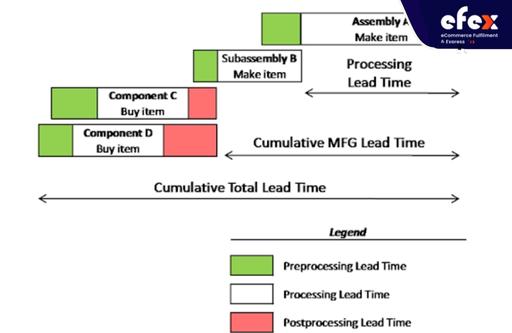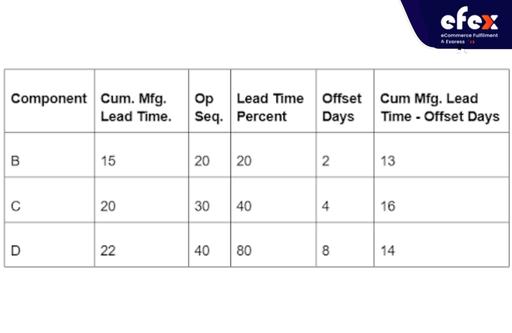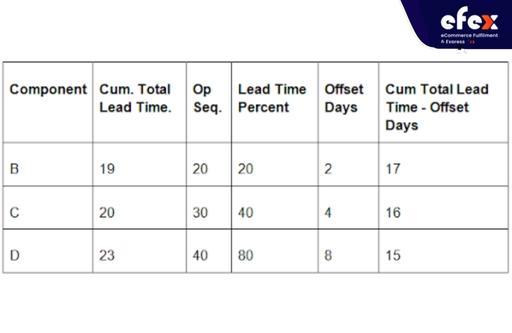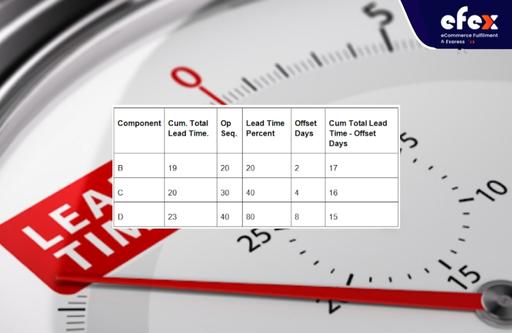
More Helpful Content
You may be familiar with the term "cumulative lead time", a manufacturing measure that tells you the estimated period of time you'll have to wait for a widget when you begin working on it then. Yet, before that, keep reading this post to gain a clear grasp of this metric.

Cumulative lead time represents the total duration required to complete a product from start to finish, encompassing all necessary steps. Cumulative lead time includes acquiring raw materials, manufacturing any subassemblies, and producing the final product. To determine the cumulative lead time, manufacturers examine each step in the bill of materials, calculate the lead time for each component, and identify the longest path through all steps. The sum of lead times along this critical path becomes the cumulative lead time, indicating the maximum time needed to produce the item from scratch.
This comprehensive measure is essential for effective production planning and scheduling in manufacturing, as it accounts for the entire production process and potential bottlenecks.

The figure above illustrates how different assemblies complete tasks at varying rates of speed. Each assembly has three lead times: one for preprocessing, one for processing the assembly, and components, and the other for postprocessing. By going through indented bill layouts, Material Bills calculates lead time of cumulative manufacturing as well as cumulative total lead time. This cumulative lead time calculation includes the updating of item information.
👉 Read More: Item Coding: Definition And Benefits
Cumulative manufacturing lead time for an item is determined by adding its own production lead time to the highest cumulative production lead time possible for every component, with operation offset taken into account.
The manufacturing lead time of the item is multiplied by lead time % for the process in which the part is applied, relying on a single lot size lead time, to determine the operation offset. There is no cumulative production lead time for purchased items. The following calculation is used in Material Bills to determine lead time of total manufacturing:
The total lead time cumulative for an item is equal to its lead-time + the highest cumulative total lead time value, minus any parts operation offset. A component's operation offset is calculated by multiplying the manufacturing lead time relying on a single lead time lot size by the operation's lead time percentage. The following formula is used by Material Bills to compute the total lead time cumulatively:
Let’s see a cumulative lead time example below! Assume, for instance, that Item A includes B, C, and D. When calculating we employ the manufacturing lead time for A; B, C, and D at operations with the values of 20, 30, and 40, respectively. The offset days, lead time and component, and percentage for every component are shown in the table below:

The following is how Material Bills determine the total lead time of manufacturing:
The cumulative total lead times for parts B, C, and D are shown in the following table:

The following is how Material Bills determine the cumulative total lead time for A:
Total lead time of cumulative= 27 days (10+17)
👉 Read More: Item Master: Example And Best Practices
When determining MRP and estimating how long it will take to produce a product from scratch, the cumulative lead time of an item is a crucial piece of information.

So how can lead time and cumulative lead time be reduced?
Less risk and material management result from decreased inventory and an increase in the businesses' cash on hand. It may entail increasing sales while maintaining higher inventory levels.
👉 Read More: 13 Stages Of Procurement Cycle With Detail Instructor
👉 Read More: 10 Steps Of The Procurement Cycle
Have you got everything about the cumulative lead time and its calculations? We hope this post will truly help you with those things! Happy calculating! Hope you have a good time with EFEX.


